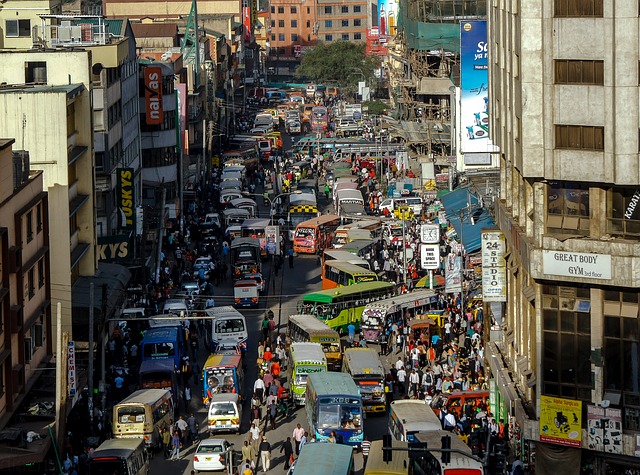By Tim Lambert
Early Kenya
The earliest inhabitants of Kenya were hunter-gatherers but from about 2,000 BC herders came to the region. Then from about 800 AD Arabs sailed to Kenya. Some settled and intermarried and they created the Swahili culture along the coast.
The first European to reach Kenya was Vasco da Gama in 1498. Subsequently, the Portuguese dominated the coast of Kenya for 2 centuries. However, they did not penetrate inland. Yet the Portuguese brought new crops to Kenya, maize, and cassava.
Colonial Kenya
Then in the late 19th century, Kenya came under British control. In 1883 Joseph Thomson was sent to map Kenya. Then in 1885, the European powers divided up Africa between themselves at the Berlin Conference, and Britain was allocated Kenya.
At first, Kenya was administered by the Imperial British East Africa Company, which was formed in 1887. However, in 1895 the British government took responsibility for Kenya. Then in the years 1895-1901, the British built a railway across the region. In the early 20th century white settlers flocked to Kenya taking the best land and the natives were forced onto reservations. Indians also came to Kenya and formed a middle class of traders.
Naturally, the Africans resented their treatment and in 1921 they formed the East African Association to fight for their rights. In 1924 it changed its name to the Kikuyu Central Association. In 1927 Jomo Kenyatta became its Secretary. Meanwhile, schools were founded in Kenya and the Africans became better educated. Many of them fought in the Second World War but afterward, they were treated as second-class citizens again. Their resentment eventually boiled over into the Mau Mau uprising in Kenya.
The Mau Mau was formed in 1952. They took secret oaths to kill Europeans and African collaborators. In 1952 a state of emergency was declared in Kenya. British troops were sent to deal with the insurgency. Then in 1953, the British began detaining Kikuyu in concentration camps. Slowly the British hunted down the insurgents and by the end of 1956, the uprising was over.
Independent Kenya
Nevertheless, the movement toward African independence was unstoppable. In 1961 an African political party Kenya African National Union was formed and in May 1963 KANU won a majority of seats in the Kenyan assembly. Finally, Kenya became independent on 12 December 1963. In 1964 Jomo Kenyatta became president of Kenya and Kenya joined the Commonwealth.
The late 1960s and 1970s were years of prosperity for Kenya and agriculture developed rapidly. However, Kenyatta died in 1978 and Daniel Arap Moi then became the leader of Kenya. In 1982 he banned opposition political parties and in 1987 he changed the constitution of Kenya to strengthen his powers. However, in the 1990s, Moi faced growing opposition.
In 1991 Moi was forced to allow other political parties to form in Kenya. Despite the opposition, he was re-elected in 1992 and 1997. Then in 1998, a bomb exploded in the US embassy in Nairobi. The explosion killed 224 people and for a short time, it had a devastating effect on tourism in Kenya. However, the tourists soon returned.
Then in 2002, Mwai Kibaki became the leader of Kenya and in 2003 he introduced free primary education. However, in 2009 northern Kenya suffered a drought.

Yet today the economy of Kenya is growing rapidly. Kenya is developing fast and there is every reason to be optimistic about its future. Meanwhile, in 2013 Uhuru Kenyatta became president of Kenya. In 2024 the population of Kenya was 53 million.
Last Revised 2025